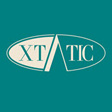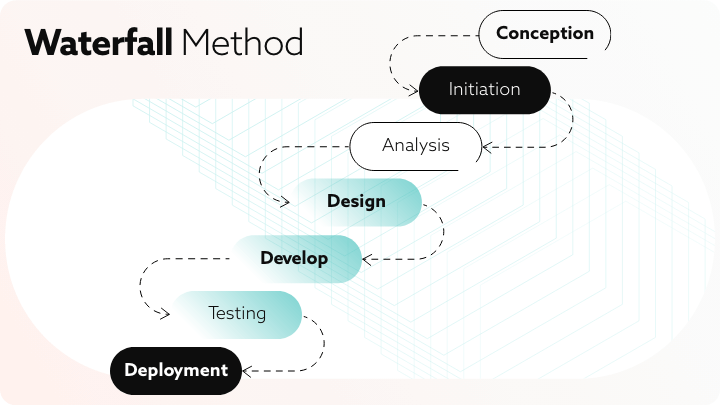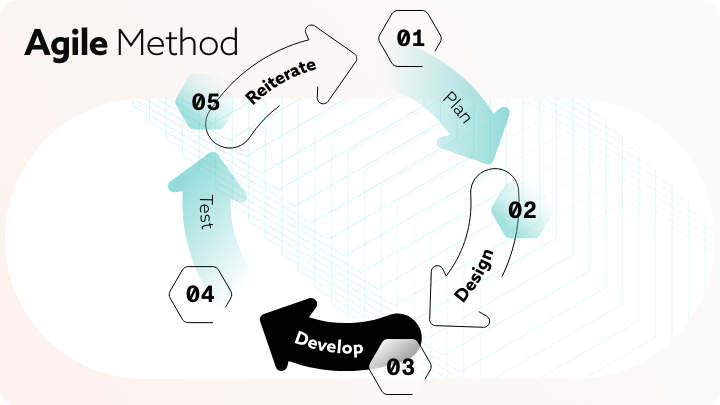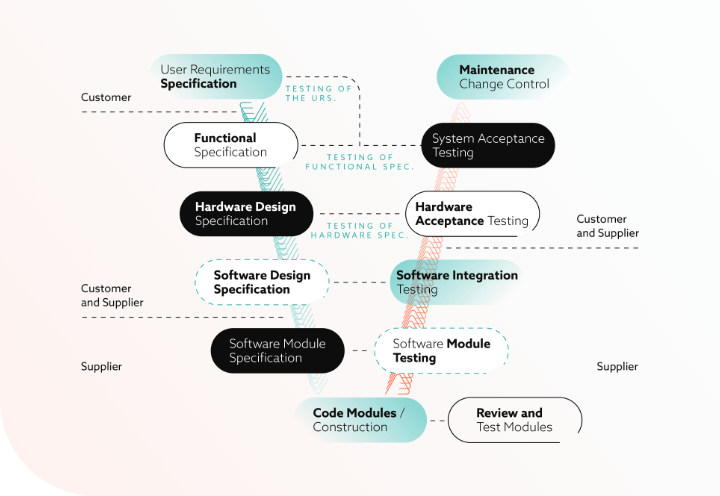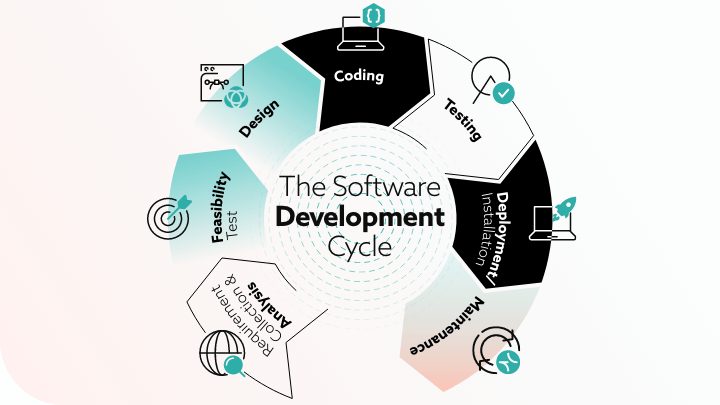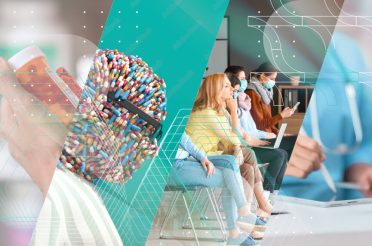Technology is made up of two parts – hardware and software. While hardware is the body of it all, the physical components that go into creating a piece of technology, software is the mind.
In order for any tech to function, it needs software to operate it. But software is a bit abstract in some ways. What we intend with this article is to uncover the process of software development lifecycle, through which software is developed, so you can better understand and implement it.
The importance of developing software is seen plainly in how technology is everywhere around us – from our school systems to our healthcare organizations. Everything is dependent on technology and technology cannot exist without software.
Just last year, the IT industry spent over $856 billion on enterprise software alone.
But what exactly comes into the making of software in general and how does the clear-defined systems development lifecycle come into play? That is the question this article aims to answer.
What is the software development lifecycle (SDLC)?
The Software Development Life Cycle (SDLC) is like a recipe that tech teams follow to make great software that meets specific needs. It’s all about being smart with time and money to create something really good.
The main goal? To make sure there are no surprises along the way and that what’s built makes customers happy, not just when it’s being made but also after it’s done. Think of SDLC as breaking down the big job of making software into smaller, easier pieces. Each piece has its own task that someone can take care of, from start to finish, making it easier to keep everything on track.
SDLC is employed for several key reasons:
- Risk management: It helps identify and address potential issues early, reducing project risks.
- Quality assurance: SDLC allows us to create high-quality software through defined standards and thorough functional testing.
- Customer satisfaction: It aligns the final product with customer expectations, meeting user needs.
- Efficient resource utilization: It optimizes time and system development efforts by organizing tasks systematically.
- Cost management: SDLC minimizes the chances of costly revisions, contributing to cost-effectiveness.
- Structured process: It provides a structured project planning framework for cohesive and systematic development.
- Documentation and transparency: SDLC emphasizes documentation for the software project transparency and future reference
To ensure that the SDLC incorporates all of these key aspects, there are a couple of different SDLC models that development teams utilize and we will tackle them in the next paragraphs in more detail.
Software development models
Each model has its unique use and situation where they are more appropriate than another. The development team has to decide on which one to use to accomplish what they have set out to create.
The Waterfall model
The Waterfall development methodology is a linear and sequential approach to software development, where each phase must be completed before moving to the next.
We can easily say that it is just like water flowing down steps. It follows a rigid and detailed plan, making it suitable for projects with well-defined requirements that are unlikely to change.
The process consists of distinct phases: requirements, design, implementation, testing, deployment, and maintenance. While Waterfall provides clear documentation and control over the development project, it can be less adaptable to changes and may lead to longer development cycles.
The Agile model
The Agile methodology is an iterative and flexible approach to software development which emphasizes collaboration, customer feedback, and adaptability to changing requirements. It’s different from the old-school Waterfall model because it breaks the work into small pieces that can be finished step by step.
Key features of the agile SDLC model include:
- Iterative development;
- Adaptability to changes
- Collaboration among cross-functional teams;
- Customer involvement;
- Continuous delivery;
- Frameworks like Scrum and Kanban.
Agile is well-suited for projects where requirements are expected to evolve because it fosters a collaborative and adaptive environment for efficient development.
The Iterative model
This iterative process is all about making the big job of creating software a lot more manageable by chopping it into smaller bits.
Imagine each little bit going on its own mini journey through the stages of making software, getting better and better each time. This way, it’s easier to spot and fix any problems as they pop up, kind of like playing a video game where you get to retry levels to improve.
It offers flexibility and adaptability, thus enabling software engineers to revisit and enhance software components based on evolving project needs and feedback.
Discover how we can help outsource Healthcare projects efficiently Speak to an expert today, and see how our on-demand IT talent and augmented teams can efficiently deliver value at every step of your roadmap.

The Spiral model
This method mixes the step-by-step approach of the Waterfall model with the flexibility of doing things in cycles. It organizes the project into repeated cycles, each comprising phases such as planning, risk analysis, engineering, and evaluation.
This model is particularly effective for complex software development projects with evolving or unclear requirements. Its cyclic nature allows for continuous refinement and adjustment based on ongoing feedback. Ultimately, this ensures a more responsive and adaptable development process.
The V-Model
Also called Verification and Validation model, the V-Model is an extension of the Waterfall model that emphasizes the importance of the validation and testing phase at each stage of development.
The model takes on a V-shaped lifecycle with close alignment between development and testing activities. By ensuring rigorous software testing throughout the development process, the V-Model aims to identify and address issues early and ensure an efficient and reliable development cycle.
The Big Bang model
This methodology is an informal and flexible SDLC approach characterized by minimal planning, often starting development with unclear or vague requirements. Suited for smaller projects or situations where requirements are uncertain, this model allows for a more spontaneous and adaptive development process.
While it lacks the structured planning seen in other lifecycle management methodologies, the Big Bang model provides a degree of flexibility and responsiveness to evolving project conditions.
In summary, the models of building software can be described as follows:
- The Waterfall model offers a linear and structured approach.
- The Agile Method emphasizes flexibility and collaboration.
- The Iterative model promotes incremental development with flexibility.
- The Spiral Model combines iteration with how to prioritize risk analysis.
- The V-Model emphasizes testing at every stage.
- The Big Bang model offers adaptability in less structured planning.
Each SDLC methodology caters to specific project requirements and provides development teams with a diverse set of options to choose from.
Key stages of the software development lifecycle
Most of the methods mentioned in this article utilize certain practices to create the intended software. These practices are usually divided into seven stages where each stage accomplishes a different necessary part of the entire development process.
It is also important to discuss how SDLC addresses security concerns at each step of the lifecycle.
Feasibility study
A feasibility study looks at whether a project can be done and if it makes sense to do it. It checks if the technology needed is available, what kind of challenges might pop up, and whether the benefits outweigh the costs. The report from this study helps everyone understand if the project matches the company’s goals.
Security is also a big part of the study. It’s about making sure the new software won’t be easy to hack or cause other security problems. The team uses this information to figure out the best way to keep everything safe, following the company’s own rules for security.
Planning
The planning stage involves defining the project’s scope, software development goals, timelines, and resource requirements. This includes identifying stakeholders, establishing communication channels, and creating a comprehensive project plan.
During this planning phase, project managers work closely with stakeholders to align expectations and set the foundation for successful project execution.
Meanwhile, security considerations are outlined in the project plan. This includes identifying potential security risks, defining security requirements, and establishing protocols for handling sensitive data. Collaboration with security experts helps in understanding and integrating security measures from the project’s inception.
Design
In the design stage, the project team creates a blueprint for the software based on defined requirements. This involves developing system architecture analysis, creating data flow diagrams, designing the user interface, and providing detailed technical specifications. Design documents serve as a roadmap for the subsequent implementation phase.
Security architecture is a key component of the design phase. Designers incorporate security features, such as encryption, access controls, and secure data storage, into the software’s architecture. Threat modeling may also be conducted to identify and mitigate potential security threats.
Implementation
The implementation or development phase is where the design is translated into executable code. Software developers write code, integrate components, and perform unit testing to ensure individual units function correctly. This stage is crucial for transforming conceptual designs into a tangible software product.
Developers follow secure coding practices to minimize vulnerabilities during the implementation phase. This involves coding with security in mind, using secure libraries, and adhering to coding standards that prevent common security flaws.
Code reviews are conducted to identify and rectify security issues before they escalate.
Testing
Testing is a comprehensive phase aimed at identifying and rectifying bugs and errors within the software.
It encompasses various testing types, including unit testing, integration testing, system testing, and acceptance testing. Testing reports document identified issues, their severity, and the resolutions implemented to enhance software quality.
Security testing is a dedicated phase within the testing stage. Various security testing techniques, such as penetration testing, vulnerability scanning, and ethical hacking, are employed to identify and address potential security vulnerabilities. This ensures that the software is resilient to unauthorized access and cyber threats.
Deployment
Deployment involves making the software accessible to end users. This includes installing the software, configuring settings, and providing necessary user training. A successful deployment ensures that users can interact with the software seamlessly and effectively.
Security protocols are reinforced during the deployment phase to safeguard the software during installation and configuration. Access controls are fine-tuned, and security configurations are applied to create a secure production environment.
This stage includes user training on security best practices to minimize the risk of human-related security issues.
Maintenance
Unlike the previous phases, the maintenance stage focuses on providing ongoing support, monitoring, and updates for the software. This includes addressing user-reported issues, monitoring performance, and implementing updates or patches.
Maintenance reports document the activities carried out and ensure that the software remains robust and responsive to evolving user needs.
Ongoing security assessments are also a part of the maintenance phase. Regular security audits, patch management, and updates are conducted to address emerging security threats. Incident response plans are in place to efficiently address and mitigate security incidents, ensuring the continued security of the software.
All these steps together make a clear and step-by-step way to build software. We focus a lot on good planning, careful testing, and always making things better at every stage of making the software.
Benefits and pitfalls of following the software development lifecycle
In healthcare technology, Software Development Life Cycle (SDLC) brings plenty of benefits and paves the way for successful projects.
Let’s break down why sticking to SDLC is a game-changer:
- Improved planning: SDLC acts like a blueprint for health tech projects. It helps teams nail down their goals, figure out what resources they need, and set realistic deadlines. This organized approach cuts down surprises and makes sure everything meets health industry rules.
- Quality Assurance: By incorporating testing and quality assurance processes throughout the SDLC process, healthcare software can identify and address defects and issues at early stages. This results in higher-quality healthcare software with fewer post-release defects, reducing the need for extensive debugging and maintenance. Ensuring the reliability and accuracy of healthcare solutions is paramount for patient safety and regulatory compliance.
- Clinical Workflow Integration: In healthcare, efficient resource management is paramount. SDLC helps healthcare organizations optimize resources, allocate roles effectively, and estimate costs accurately. This ensures that healthcare software seamlessly integrates into existing clinical workflows, enhancing overall operational efficiency.
- Risk Management: Identification and mitigation of risks are integral parts of SDLC, especially crucial in healthcare projects. Through risk assessments at various stages, project teams can proactively address potential issues and minimize the impact of uncertainties on healthcare project timelines and objectives. This is particularly vital in the healthcare sector, where regulatory compliance and patient safety are paramount.
- Interoperability and Scalability: Healthcare systems often involve multiple stakeholders and diverse technologies. SDLC ensures software can adapt over time, making it easier to work with different technologies, have new features, and meet new software requirements.
- Time Efficiency: SDLC promotes a systematic and organized approach to healthcare software development, leading to more efficient workflows and reduced development time. Proper planning and early identification of potential issues contribute to timely delivery of healthcare software, ensuring that solutions align with the dynamic healthcare landscape.
- Collaboration and Communication: SDLC emphasizes collaboration among healthcare software development team members and stakeholders. Regular communication channels, such as meetings and status reports, foster a collaborative environment where everyone involved in healthcare projects is aligned with the goals and objectives of healthcare software solutions.
- Ongoing Improvement: The iterative nature of SDLC allows for continuous improvement in healthcare software solutions. After each development cycle, healthcare software teams can assess performance, gather feedback from healthcare professionals, and implement enhancements. Ultimately, this fosters a culture of learning and refinement. This iterative approach ensures that healthcare solutions evolve to meet changing industry needs and technological advancements.
The benefits of adopting SDLC in healthcare software extend to improved data security, streamlined clinical workflows, adaptability to evolving standards, and a focus on enhancing patient experiences.
While SDLC lays out a clear path for project success, it’s not without its challenges and bumps in the road.
Challenges
Making software for healthcare isn’t an easy job. It comes with its own set of problems that need clever fixes.
One big issue is when the list of what the software needs to do keeps growing because of new health care needs. This can slow things down and make things more expensive.
Also, there’s often not enough time or money, which means teams have to work smart to make good quality software that still follows all the rules. The healthcare world changes a lot, so being able to shift gears and handle new requests without losing sight of the original plan can be tough.
To deal with these challenges, it’s really important to have a solid plan for handling changes. This means knowing exactly what the software should do from the start, keeping everyone in the loop, and having a system for dealing with new requests in an organized way.
Good planning and being realistic about what can be done with the resources available are key to not running out of time or money. Plus, using agile methods can help project management teams adapt to changes more easily.
Having open lines of communication helps everyone work together better and adjust to the fast-paced world of healthcare.
Risks
In terms of risks, healthcare software must address the risk of inadequate testing and security concerns.
Strong checks on quality, safe ways of writing code, and careful security checks are super important to make sure the software works well and is safe. Being stuck in old ways and relying too much on outside things can cause problems in healthcare projects.
Proactive risk management, stakeholder engagement, and effective communication strategies are essential for successful outcomes. Understanding and addressing these healthcare-specific challenges and risks are essential for the successful development of secure, adaptable, and high-quality healthcare software solutions.
SDLC in healthcare
When it comes to making software for healthcare, things are a bit different than in other areas. This is mostly because the healthcare world has its own set of rules and needs to think about.
Let’s dive into what makes healthcare software development unique.
Regulatory compliance
In the healthcare sector, the Software Development Life Cycle (SDLC) is distinctly influenced by the need for stringent regulatory compliance.
Healthcare operates under frameworks such as the Health Insurance Portability and Accountability Act (HIPAA), which mandates robust measures to ensure patient data privacy and security.
Unlike some other industries, healthcare software development must adhere to highly specific and stringent regulations governing the protection of sensitive health information. This regulatory landscape significantly shapes the planning, development, and deployment stages of the SDLC in healthcare.
Patient-centric focus
SDLC in healthcare places a pronounced emphasis on creating software solutions with a patient-centric focus. User interfaces and experiences are designed to prioritize patient needs and engagement.
The unique nature of healthcare delivery, where the end-users are often patients seeking care, requires a thoughtful approach to design and functionality. Ensuring that healthcare software is intuitive, accessible, and aligns with the patient-provider relationship is a distinctive characteristic of SDLC in the healthcare domain.
Deliver a world-class Healthcare project–with high-skilled, seamlessly integrated IT talent Learn how from our consultants. We work with clients worldwide.
Data security and confidentiality
The healthcare SDLC is characterized by an emphasis on data security and confidentiality. Given the sensitivity of health information, robust measures are implemented to safeguard patient data throughout the software development process.
Protecting against unauthorized access, ensuring secure data transmission, and maintaining confidentiality are paramount considerations. SDLC practices in healthcare prioritize the development of software solutions that not only meet functional requirements but also adhere to the highest standards of data security to preserve patient trust and regulatory compliance.
The importance of having efficiently functioning software is more than apparent. But the way to achieve it is a bit more complicated and that’s what this article aims to present. It is valuable to understand the necessary steps to create adequate software and what that could bring to your business.
There are always challenges and risks, but they can be navigated with the help of decent management and preparation. For healthcare, being ready and managing things well means everything can run smoothly, despite the extra layers of complexity.








